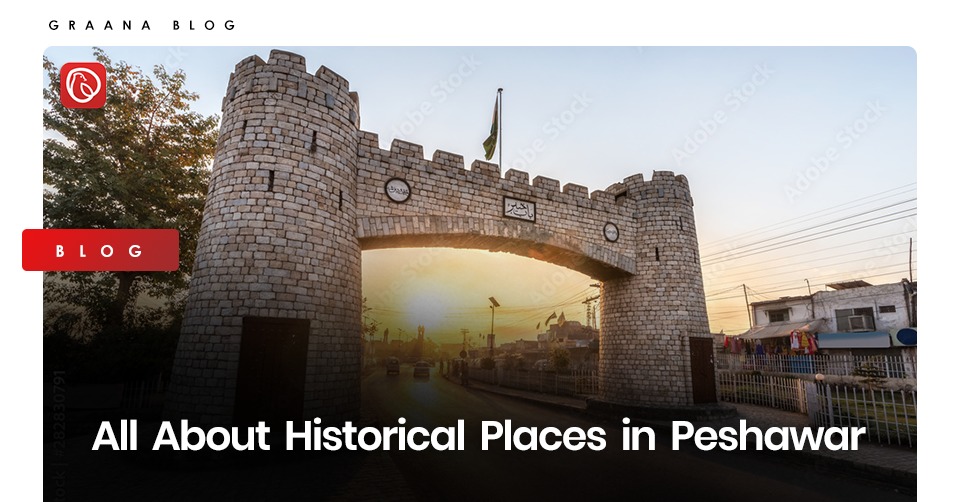Peshawar is not only one of the oldest and historically significant cities of Pakistan but also of the entire south-Asian region. The roots of this beautiful city date back to 539 BC. There are several notable buildings, landmarks and historical places in Peshawar, all of which are reminiscences of the city’s past. It has been a part of many empires and civilisations.
If you are planning a trip here soon, Graana.com has compiled a list of various famous historic places in Peshawar below.
Famous Historic Places in Peshawar
| Name | Location | Year Built |
|---|---|---|
| Sethi House | Mohallah Sethiyan, Chowk Yadgar Rd | 1884 |
| Bala Hisar Fort | Hashtnagri, Peshawar | Before 1834 |
| Qissa Khawani Bazaar | Andar Shehr, Peshawar | Not specified |
| Jamrud Fort | Besides Bab-e-Khyber | Not specified |
| The Mahabat Khan Mosque | Andar Shehr neighborhood, Peshawar | 1670 |
| Peshawar Museum | Saddar Road opposite Governor House Peshawar & Civil Secretariat | 1905 |
Sethi House
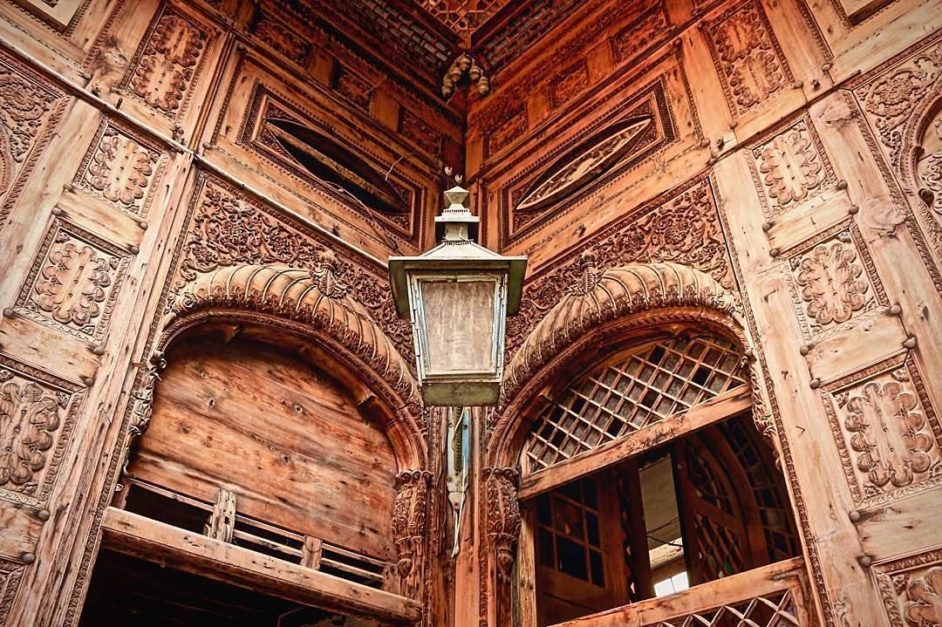
Constructed in the 19th century, there are twelve famous Havelis located in the city of Peshawar, and Sethi House is one of them. It was built in the year 1884, and belonged to the rich Sethi Family, who had a vast chain of businesses throughout South and Central Asia.
The inspiration for its architecture was taken from the regions of Bukhara and Uzbekistan. Some of the key features of the haveli include elaborate wooden carvings, shaded glass windows, and a basement. It is astonishingly well-preserved and is a popular tourist attraction.
Bala Hisar Fort
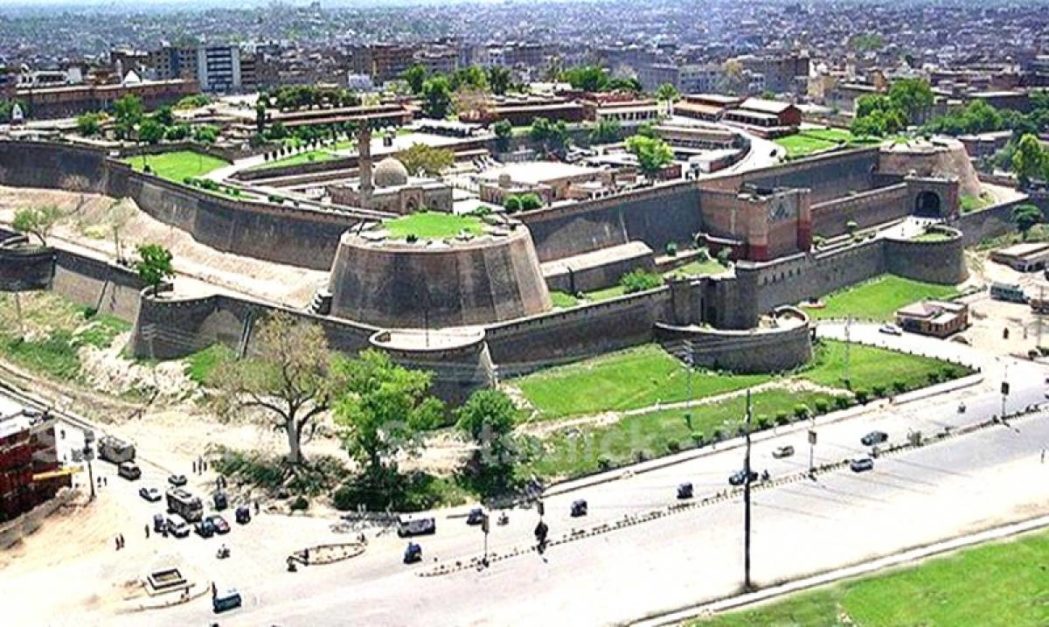
One of Peshawar’s most magnificent historical forts is the Bala Hisar Fort. It is positioned atop a sharp rock towards the city’s northwestern side. The name ‘Bala Hisar’, which means “aloft fort” in English, has roots in an Afghan dialect of Persian.
Up until 1834, when the Sikh kingdom of Punjab tore it down and reconstructed it, it served as the royal home to the Durrani Kingdom. The fort has undergone meticulous maintenance work over the years.
Extensive views of the city can be seen from here. Since the Pakistan Army is directly responsible for safeguarding it, nobody is granted permission to enter Bala Hisar Fort. To get a better look of the fort, however, you can still climb the elevated area surrounding it.
The fort covers an area of about 435,600 sq ft, and it is about 90 feet tall. It is interesting to note that the fort’s main gate faces the ancient route to India.
Qissa Khawani Bazaar
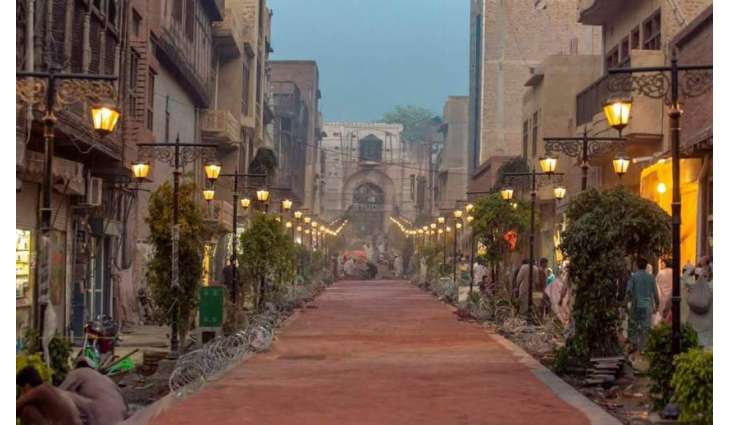
One of the most thriving commercial historical places in Peshawar is the Storytellers’ Street, also known as Qissa Khwani Bazaar.
The place’s name alludes to a distinct past when it was a meeting place for traders and travellers from across the continent to share tales. The market served as a major trading hub in Asia in the past, where they sold spices, black tea, silver and gold.
The area where there used to be a concentration of cafés has been replaced by a market that mostly sells gadgets and clothing.
Jamrud Fort
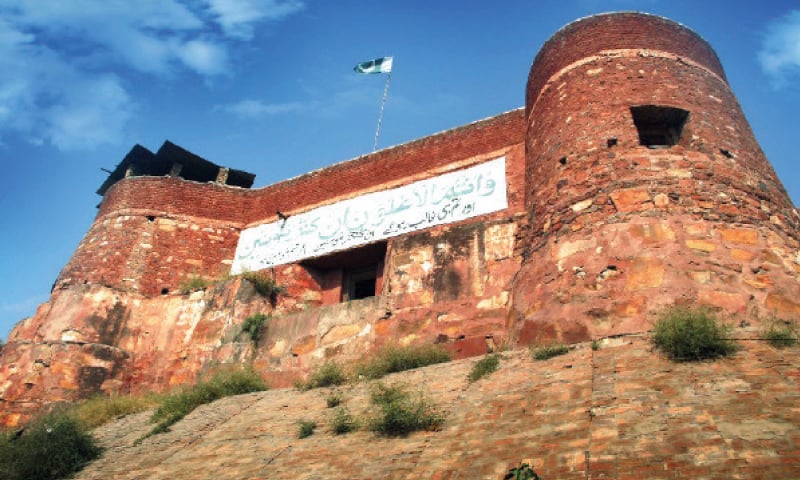
Another significant historical landmark called Jamrud Fort, also known as Fatehgarh, is situated next to Bab-e-Khyber, the entrance to the former Khyber Pass, 17 kilometres west of Peshawar.
According to historians, the fort was built by Hari Singh Nalwa (1791–1837), the supreme commander of the Sikh Khalsa Army. It is widely believed that he played a significant role in the conquests of Kasur, Sialkot, Attock, Multan, Kashmir, Peshawar, and Jamrud.
At the time of Nalwa’s death, Jamrud served as the empire’s western boundary.
The Mahabat Khan Mosque
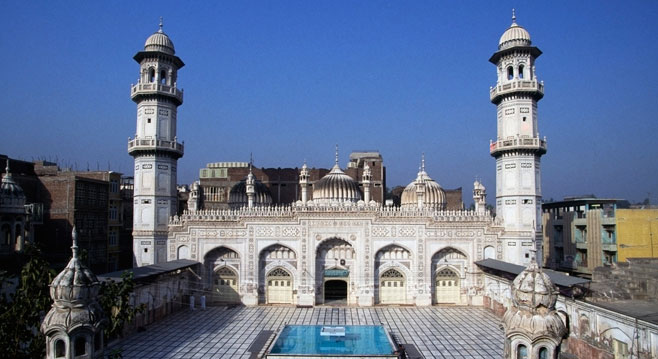
The Mahabat Khan Masjid is a prime example of classic Mughal architecture that admirably reflects the rich history of the area. It ranks among the most well-known historical landmarks in Peshawar. Mahabat Khan, the governor of Peshawar at the time of the reign of Emperor Shah Jahan, constructed it in 1670.
Three domes make up the mosque’s exterior structure, and there are two 107 feet-tall minarets on either side. The five arched entrances of the mosque are flanked by six smaller ornamental minarets, with two more minarets around the group of six.
The prayer hall features beautifully engraved floral designs throughout. In Peshawar’s old neighbourhood of Andar Shehr, this historic building still stands majestically today.
Peshawar Museum

Peshawar Museum should definitely be on the list of attractions to visit if you are in the city. It was built in 1905 while Britain was still a colonial power. It currently has 14,000 unique items, including sculptures, tools, household items, and weapons.
Additionally, the Peshawar Museum is home to a sizable collection of pre-Islamic coins, works of art, and antiquities from the Chitral and Kalash regions.
For more guides on top tourist spots in Pakistan, visit the Graana blog.
